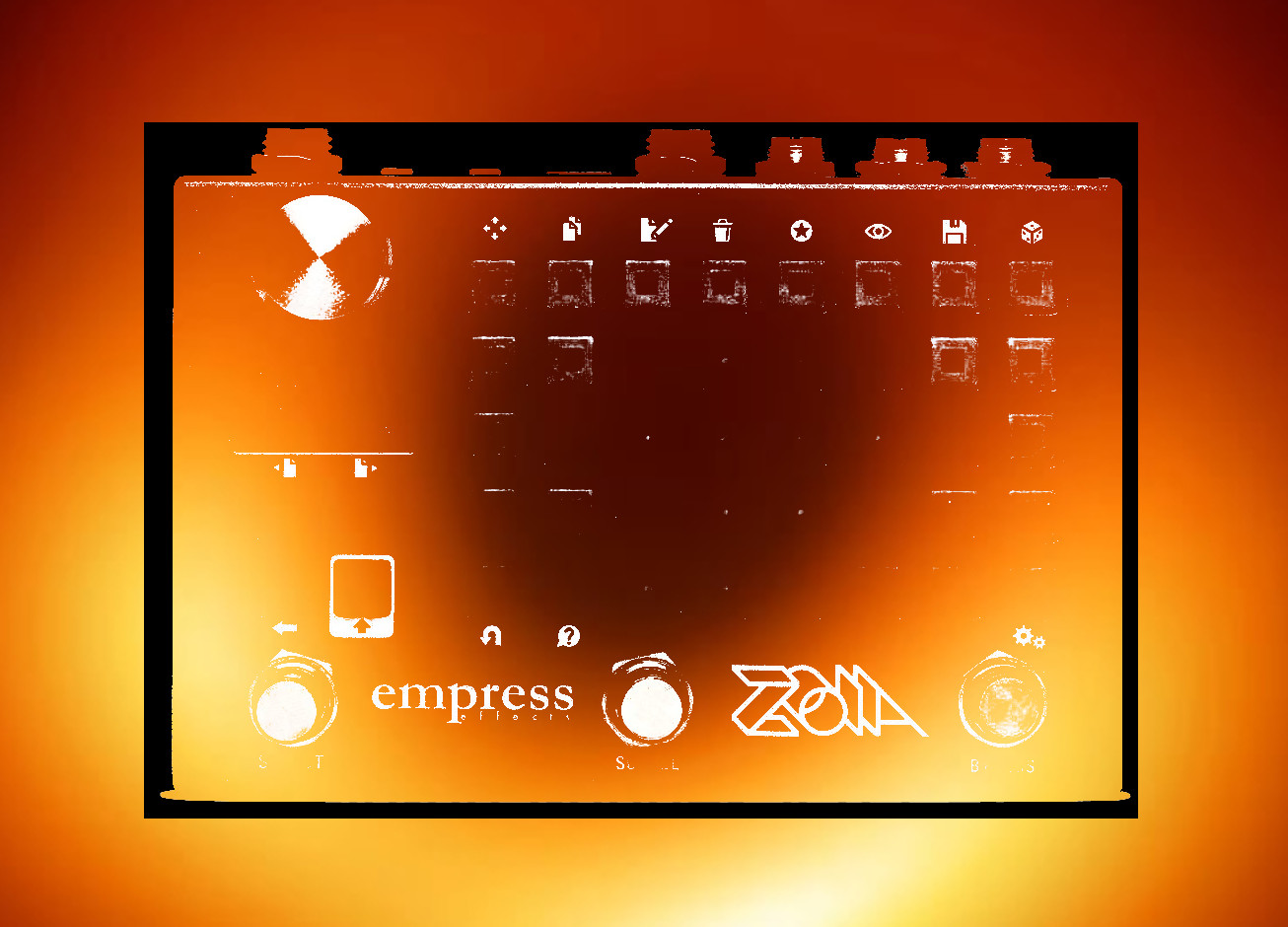Grain Pong is a stereo, ping pong delay, whose wet signal path begins with a pair of independent, parallel granular modules. Although some of the granular modules’ controls are shared (for ease of use), you can determine the pitch, grain size, and position of the grains independently. Additionally, the grain position control for each granular module, and the texture control shared by both, can be modulated.
Modulating the grain position, in particular, produces a number of effects, from trilling/note repeat sounds, to almost reverse textures, as the position shifts through the buffer of the granular module. Arranged in a ping pong configuration, these sounds swirl around, creating dense echo structures.
These then pass into a delay line array set for ping pong, before passing through a reverb lite module and then reaching the wet/dry mix.
The granular modules can also be frozen, producing unique stereo drones and soundscapes.
The signal path is stereo throughout.
A special thanks to my patrons on Patreon for their support: Rob Flax, Stepan Grammatik, brockstar, Mats Unnerholm, D Sing, Will Scott, drew batchelor, Miguel, Steve Bragg, Joab Eastley, Tomi Kokki, Mitch Lantz, Ben Norland, Daniel Morris, and Roman Jakobej!
If you would like to support my work on ZOIA, please visit patreon.com/chmjacques
Controls:
Footswitches:
Left, momentary — tap tempo. This sets the tap tempo for the delay, but also the modulation. Additionally, tempo can be set by MIDI clock. The delays can reach 16 s.
Middle, latching — ping pong select. Both settings are types of ping pong delays, with “off” being a more classic back and forth, while “on” produces slightly uneven dispersal of delay taps that enhances the sense of stereo movement.
Right, latching — freezes the granular buffer
Front page:
Across the top:
Delay feedback — controls the delay feedback amount; at 100% the delays will loop
Mix — wet/dry mix
The next set of controls feature duplicates for each granular module, color-coded to match that module:
Grain size — larger grains will cause the delay taps to resemble more traditional delays, while smaller sizes will tend toward bit crushing
Pitch — -1 to 1 range covers +/- 2 octaves, so .5 = +1 octave, -1 = -2 octaves, etc. Unquantized. Higher pitches will tend to sound louder, lower pitches quieter.
Position — the grain position
Depth — this pertains to the modulation of the grain position; the modulation moves toward later positions in the buffer, so a position of 0 and a depth of 1 will span the entire buffer, a position of .5 and a depth of 1 will only span the last half of the buffer
Mod on — pushbutton that determines if the granular module’s position is modulated
Random or LFO — each granular module can be modulated by an independent random module or a shared LFO (default sine); when the button is latched, LFO is selected
Density — controls the granular module density; this produces everything from tremolo effects to disjointed rhythms; it is highly interactive with grain size
Texture — controls the granular module texture; higher values produce smoother grains, lower values are more abrupt and can accentuate the distortion of smaller grain sizes
Mod on — this is a modulation control for the texture module; modulation moves toward 0, so if the texture module is set to 1, it will module between 1 and 0, if the texture module is set to .5, it will modulate between .5 and 0
In the bottom left corner are two white controls for the reverb:
Reverb decay —
Reverb mix — although I’m a big fan of washing things out with reverb, in most cases, with this patch, I prefer a lighter touch, allowing the reverb to just give a greater sense of “space”; but feel free to play around or disable the reverb entirely
There are also two indicator lights:
Red — ping pong select, relates to the position of the middle stompswitch
Aqua — freeze, relates to the position of the right stompswitch
Second page (ins and outs and dividers and LFOs)
This page contains the audio ins and outs of the patch. At the top is a button that allows you to select between tap tempo control or MIDI clock control.
Beneath these are clock dividers and LFOs:
On the left are dividers and LFOs for the position modulation and texture modulation. You can change their relationship to the master tempo.
On the right is a clock divider for the delay lines.
Sound clip:


